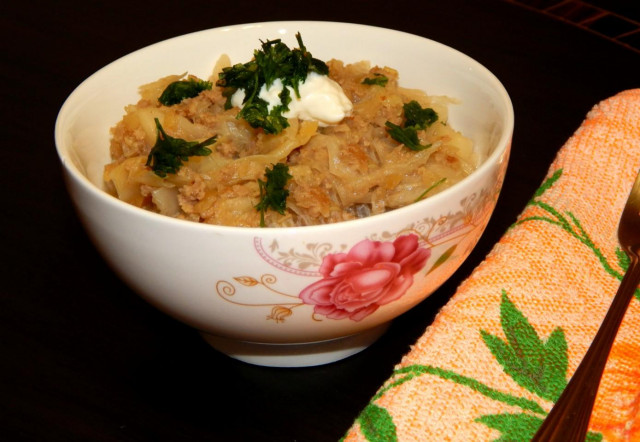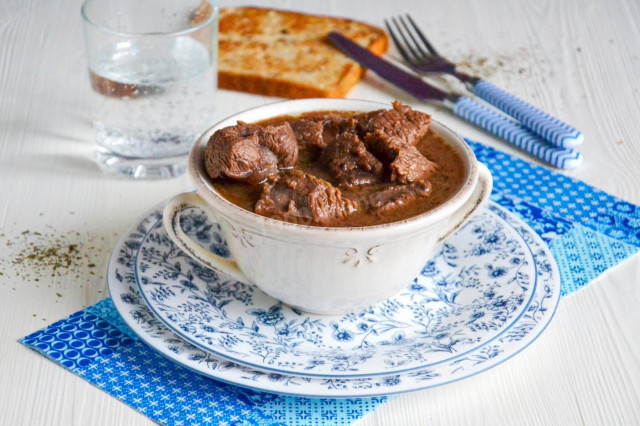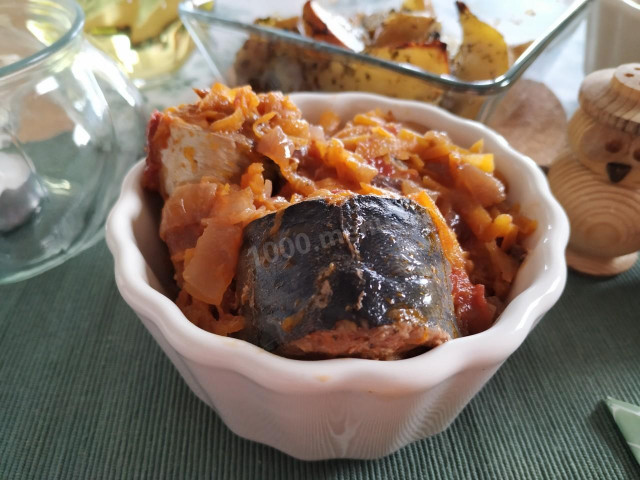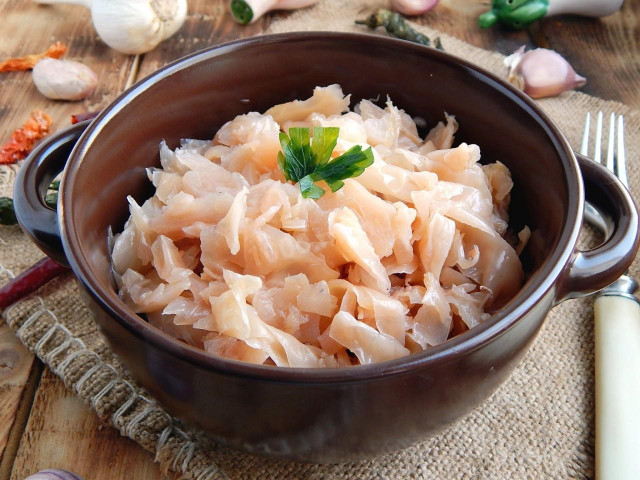Composition / ingredients
Step-by-step cooking
Step 1:

How to put out meat in tomato sauce? Prepare all the products according to the list. You can take meat from any part of the carcass, at your choice. But it's better if it's fillet. Suitable for any: beef, pork, lamb, chicken. I'll take the beef. Cut off all the excess from the meat, rinse well and dry with paper towels.
Step 2:
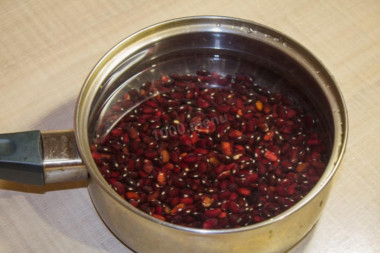
Soak the beans overnight - this is very important, and this is probably the most difficult thing - not to forget in the evening))) If you take canned or string beans (which is acceptable), skip this step. The water should completely cover the beans and be 3-4 fingers higher. I took red beans, but both white and spotted ones will do here.
Step 3:

During the night, my beans increased approximately twice.
Step 4:

Drain the water in which the beans were soaked. Flip the beans into a colander so that the excess liquid goes away.
Step 5:
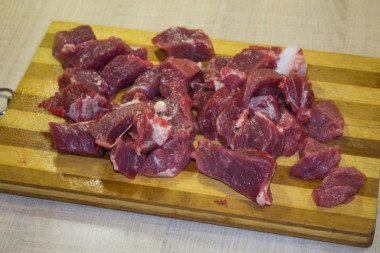
Cut the meat into pieces of arbitrary sizes, but not too large and not too small.
Step 6:

Peel the onion, wash it, dry it and chop it finely. Moisten the knife with cold water so as not to cry while slicing))
Step 7:

Grate the peeled carrots on a medium or coarse grater.
Step 8:

Fry the meat in a preheated frying pan with the addition of vegetable oil. The temperature of the pan should be very high, it is important that the meat is covered with a crust and all the juice remains inside. For such dishes, I always take an old cast-iron frying pan or a cauldron - this has its own charm.
Step 9:
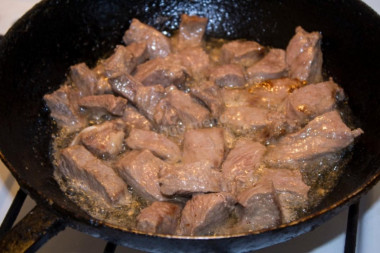
Fry the meat until the same golden brown, stirring.
Step 10:
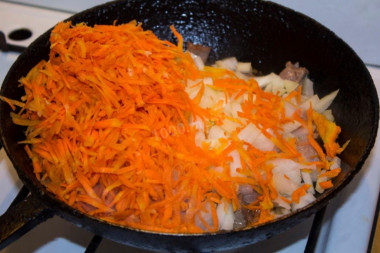
Then add the onion and carrot. Reduce the heat to medium.
Step 11:
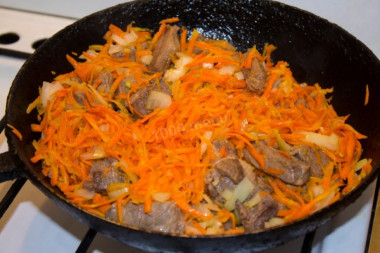
Stir and fry for 4-5 minutes until the vegetables are soft, stirring.
Step 12:
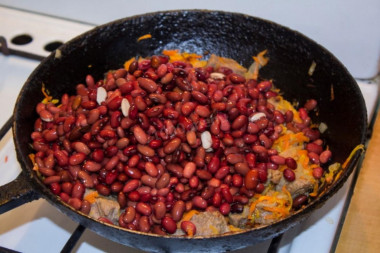
Add soaked beans to the meat.
Step 13:
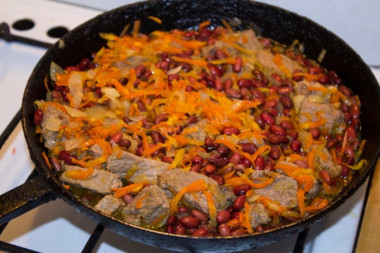
Pour a glass of water into the pan, mix.
Step 14:
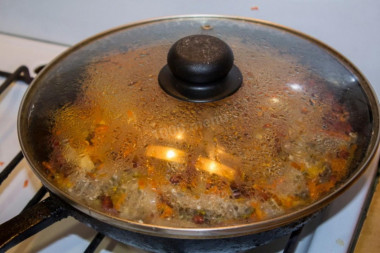
Cover the pan with a lid and simmer the dish for 35-45 minutes, stirring occasionally. You can reduce the fire to weak or medium-weak.
Step 15:

Then add tomato juice or tomato paste diluted with water to the meat.
Step 16:

Add salt.
Step 17:
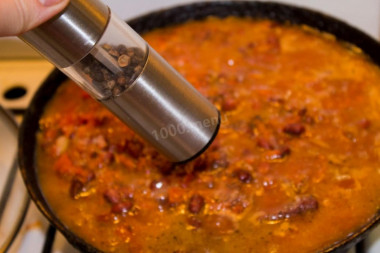
Pepper.
Step 18:

Stir and simmer under the lid for another 50 minutes.
Step 19:
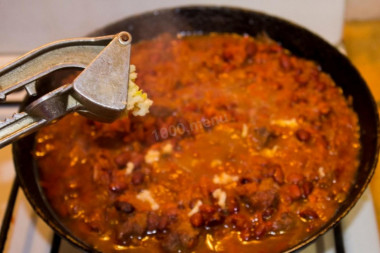
Our dish is almost ready - squeeze a clove of garlic into it.
Step 20:

Add bay leaf.
Step 21:
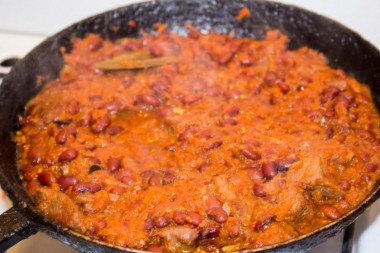
Simmer for another 10 minutes. Then turn off the stove.
Step 22:
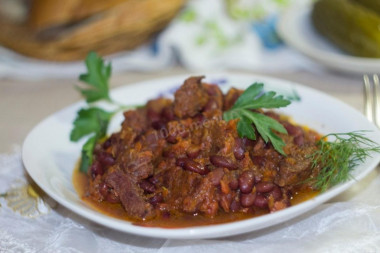
The dish is self-sufficient and does not require a side dish! As an addition, homemade pickles are perfect for it.
Step 23:
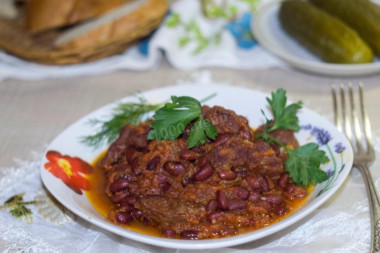
Bon appetit!
I really love such dishes - everything seems to be elementary simple, and it is prepared with minimal effort, and the products are simple, but as a result you just lick your fingers and want additives! A full-fledged self-sufficient dish that does not require a side dish!
Use oil with a high smoking temperature for extinguishing! Any oils are useful only until a certain temperature is reached - the point of smoking, at which the oil begins to burn and toxic substances, including carcinogens, are formed in it.
Unrefined oils, with rare exceptions, have a low smoking point. There are a lot of unfiltered organic particles in them, which quickly begin to burn.
Refined oils are more resistant to heating, and their smoking point is higher. The most common of the oils with a high smoking point: refined varieties of sunflower, olive and grape.
Caloric content of the products possible in the composition of the dish
- Onion - 41 kcal/100g
- Melted beef fat - 871 kcal/100g
- Fat beef - 171 kcal/100g
- Lean beef - 158 kcal/100g
- Beef brisket - 217 kcal/100g
- Beef - okovalok - 380 kcal/100g
- Beef - lean roast - 200 kcal/100g
- Beef shoulder - 137 kcal/100g
- Beef - ribs - 233 kcal/100g
- Beef - ham - 104 kcal/100g
- Beef - tail - 184 kcal/100g
- Boiled ham - 269 kcal/100g
- Beef corned beef - 216 kcal/100g
- Carrots - 33 kcal/100g
- Dried carrots - 275 kcal/100g
- Boiled carrots - 25 kcal/100g
- Beans - 328 kcal/100g
- White beans - 352 kcal/100g
- Fiery red beans - 23 kcal/100g
- Fresh frozen beans in a package (300 g.) - 102 kcal/100g
- Garlic - 143 kcal/100g
- Bay leaf - 313 kcal/100g
- Ground black pepper - 255 kcal/100g
- Vegetable oil - 873 kcal/100g
- Water - 0 kcal/100g
- Table salt - 0 kcal/100g
- Tomato juice - 21 kcal/100g



